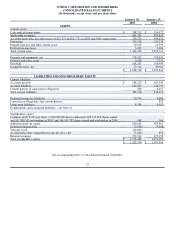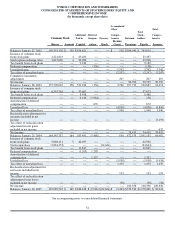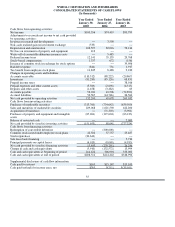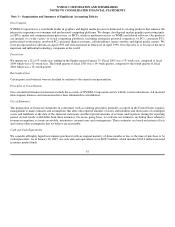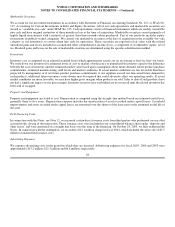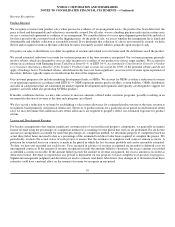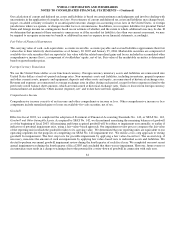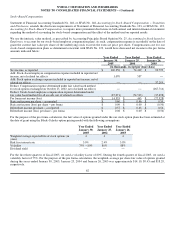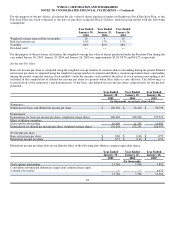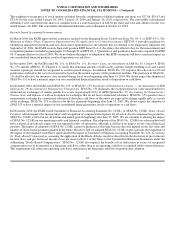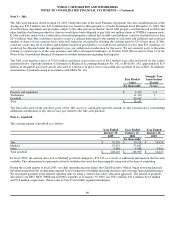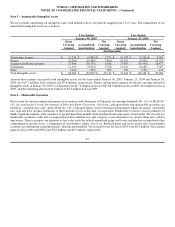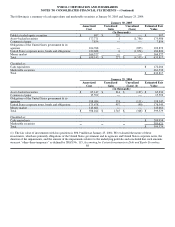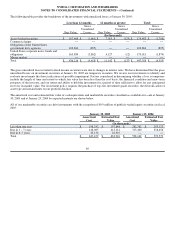NVIDIA 2005 Annual Report Download - page 67
Download and view the complete annual report
Please find page 67 of the 2005 NVIDIA annual report below. You can navigate through the pages in the report by either clicking on the pages listed below, or by using the keyword search tool below to find specific information within the annual report.
NVIDIA CORPORATION AND SUBSIDIARIES
NOTES TO CONSOLIDATED FINANCIAL STATEMENTS − (Continued)
Our calculation of current and deferred tax assets and liabilities is based on certain estimates and judgments and involves dealing with
uncertainties in the application of complex tax laws. Our estimates of current and deferred tax assets and liabilities may change based,
in part, on added certainty or finality to an anticipated outcome, changes in accounting or tax laws in the United States, or foreign
jurisdictions where we operate, or changes in other facts or circumstances. In addition, we recognize liabilities for potential United
States and foreign income tax contingencies based on our estimate of whether, and the extent to which, additional taxes may be due. If
we determine that payment of these amounts is unnecessary or if the recorded tax liability is less than our current assessment, we may
be required to recognize an income tax benefit or additional income tax expense in our financial statements, accordingly.
Fair Value of Financial Instruments
The carrying value of cash, cash equivalents, accounts receivable, accounts payable and accrued liabilities approximate their fair
values due to their relatively short maturities as of January 30, 2005 and January 25, 2004. Marketable securities are comprised of
available−for−sale securities that are reported at fair value with the related unrealized gains and losses included in accumulated other
comprehensive income (loss), a component of stockholders' equity, net of tax. Fair value of the marketable securities is determined
based on quoted market prices.
Foreign Currency Translation
We use the United States dollar as our functional currency. Foreign currency monetary assets and liabilities are remeasured into
United States dollars at end−of−period exchange rates. Non−monetary assets and liabilities, including inventories, prepaid expenses
and other current assets, property and equipment, deposits and other assets and equity, are remeasured at historical exchange rates.
Revenue and expenses are remeasured at average exchange rates in effect during each period, except for those expenses related to the
previously noted balance sheet amounts, which are remeasured at historical exchange rates. Gains or losses from foreign currency
remeasurement are included in “Other income (expense), net” and to date have not been significant.
Comprehensive Income
Comprehensive income consists of net income and other comprehensive income or loss. Other comprehensive income or loss
components include unrealized gains or losses on available−for−sale securities, net of tax.
Goodwill
Effective fiscal 2003, we completed the adoption of Statement of Financial Accounting Standards No. 142, or SFAS No. 142,
Goodwill and Other Intangible Assets. As required by SFAS No. 142, we discontinued amortizing the remaining balances of goodwill
as of the beginning of fiscal 2003. All remaining and future acquired goodwill will be subject to impairment tests annually, or earlier if
indicators of potential impairment exist, using a fair−value−based approach. Our impairment review process compares the fair value
of the reporting unit in which the goodwill resides to its carrying value. We determined that our reporting units are equivalent to our
operating segments for the purposes of completing our SFAS No. 142 impairment test. We utilize a two−step approach to testing
goodwill for impairment. The first step tests for possible impairment by applying a fair value−based test. The second step, if
necessary, measures the amount of such an impairment by applying fair value−based tests to individual assets and liabilities. We
elected to perform our annual goodwill impairment review during the fourth quarter of each fiscal year. We completed our most recent
annual impairment test during the fourth quarter of fiscal 2005 and concluded that there was no impairment. However, future events or
circumstances may result in a charge to earnings due to the potential for a write−down of goodwill in connection with such tests.
61



